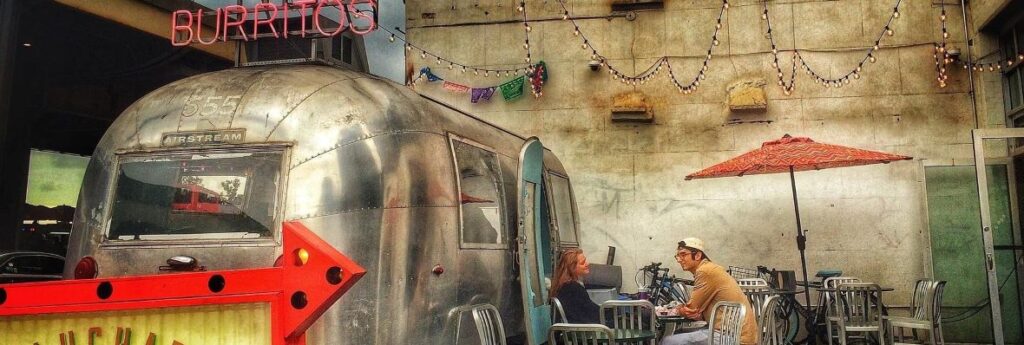As COVID-19 ravaged New York City, virus-wary denizens locked out of indoor public places poured into the streets, sidewalks, and parks. They dined with friends in outdoor sheds hastily erected by restaurants, and went to health classes, concerts, and even therapy sessions on streets closed to traffic.
Now as the city continues on its path of recovery, the pandemic could be leaving a lasting imprint on how the city uses its roadways: More space for people and less room for cars.
Even though indoor dining has resumed in the city – no masks or vaccine cards required – outdoor dining decks, set up in former parking lanes, have never been more plentiful.
Meanwhile, the city is expanding its Open Streets program, which closes roadways to vehicles and opens them to pedestrians. The expansion of the program – originally conceived as a way to give New Yorkers more space to exercise – is partly intended to increase foot traffic along struggling business corridors and give lower-income neighbourhoods similar opportunities as higher-profile and wealthier enclaves.
New York’s streets – once places where kids played stickball – were turned over nearly completely to vehicles in the automobile age, except for the occasional summer street fair.
But for years, some city leaders have sought to “reinvent and repurpose the use of our streets,” says the city’s transportation commissioner, Ydanis Rodriguez, who wants more neighbourhood promenades for outdoor gatherings or give safe spaces where parents can teach children how to roller blade, toss a ball or ride a bike.
“The message to all New Yorkers is that our space is their space – that our streets don’t belong to car owners only,” says the commissioner, who oversees both the Open Restaurants and Open Streets programs.
That rethinking began before the pandemic. Two decades ago, former Mayor Michael Bloomberg oversaw a major expansion of bike lanes and allowed bike rental stations to be set up on city streets. He championed pedestrian plazas like those in Herald Square and Times Square to keep cars out of pedestrian-heavy corridors. And his administration extended waterfront greenways and parks, especially in Manhattan and Brooklyn.
Mayor Bill de Blasio followed his predecessor’s lead and put more measures in place to control and slow vehicular traffic. He also pushed, like Bloomberg, for a system that would charge tolls to drive in a large swath of Manhattan.
Spurred by a traffic accident that killed a 15-year-old girl in the first days of his tenure, the current mayor, Eric Adams, vowed to continue “recapturing space for pedestrians.”
Among the legacies of the pandemic could be the remaking of the city’s food culture by permanently expanding it from the confines of indoor dining to eating en plein air, giving curbsides a bit of Parisian flair.
Before the pandemic, 1,200 establishments had permits to set up tables and chairs on sidewalks. But under the pandemic era’s emergency Open Restaurants program, more than 12,000 eateries and bars got permission to extend service into the streets.
New York City officials and restaurateurs alike say that the outdoor dining shacks helped lure diners back to restaurant tables and helped save the jobs of more than 100,000 workers.
“Out of all the doom and gloom from the pandemic, one of the bright spots is that it allowed us to reimagine our relationship with the public space – and that’s everything from open restaurants to open streets,” said Andrew Rigie, the executive director of the New York City Hospitality Alliance, the trade group for pubs and eateries.
He called outdoor dining a “natural progression,” accelerated by necessity and allow New Yorkers and visitors to “enjoy the city in a way they may not have prior to the pandemic.”

